Fiona Ingram's Blog, page 50
May 2, 2013
Book Review: Capitol Hell
Capitol Hell tells the story of Allison Amundson, a small town girl who lands the highly sought after job of scheduler to the newly-elected and rising star of the US Senate, Senator Anders McDermott III. If you thought politics is all fundraisers and colored balloons, think again. Don’t think Hollywood; think hell. Allison has grandiose dreams at the outset. But her meteoric rise from South Dakota to Pennsylvania Avenue doesn’t quite work out the way she envisaged it. Life on the Hill is far more banal than she expected. From rescuing moldy laundry, to picking out lingerie for the boss’s
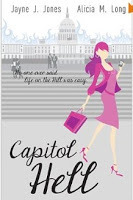 pampered wife; from late nights to excruciatingly early morning starts; from petty office politics to full-blown office warfare; from sticking campaign labels onto water bottles to the inevitable humiliation of a missing “l” in the word “public,” Allison and her love-struck friend Janet fumble through an exhausting campaign trail, and discover the ultimate truth about their boss—perception isn’t always reality.
pampered wife; from late nights to excruciatingly early morning starts; from petty office politics to full-blown office warfare; from sticking campaign labels onto water bottles to the inevitable humiliation of a missing “l” in the word “public,” Allison and her love-struck friend Janet fumble through an exhausting campaign trail, and discover the ultimate truth about their boss—perception isn’t always reality.Based on the true-life experiences of authors Jayne Jones and Alicia Long, the book gives readers a glimpse into what life is really like inside of the beltway. Capitol Hell is a witty novel about the crazy co-workers, high maintenance politicians, and the over-the-top entourages that only a political insider gets to see. Written with a humorous and irreverent style, sometimes a little saucy, the political behind-the-scenes antics will have you laughing (and wondering!). Allison and her sidekick Janet are well-rounded characters, as are the various co-workers that join the fray. The true-life experiences of the authors add that unmistakable ring of truth to sometimes downright strange occurrences. It is less a story with a dedicated plot line and more a series of anecdotes linked together. However, still very enjoyable. 4 stars
First reviewed for Readers Favorite
Published on May 02, 2013 09:32
April 28, 2013
Book Review: Survivors of Atlantis
Atlantis. Just the name conjures up mysteries and undiscovered secrets of a past, magnificent, and now fallen civilization. Unsurprisingly, in modern times, countless books have been written on the subject; numerous movies have been made; and just as many theories have been espoused. Did Atlantis exist? If so, why are there no physical traces of an island past the ‘Pillars of Hercules’ (Straits of Gibraltar) that Plato (427-347 BC) describes as being ‘larger than Libya and Asia together’ when the island supposedly was destroyed overnight in a volcanic explosion? The writings of Plato have prompted theories and debate for over 2000 years. Plato was not the only person to speculate about Atlantis. There are 24 or so references to Atlantis by ancient authors, whose works date from 4000 BC to 450 AD (Egyptian, Greek, Roman, and Indian writers). Many people believe the tale to be complete fiction; others believe that the story was inspired by catastrophic events that may have destroyed the Minoan civilization on the islands of Crete and Thera. Still others maintain that the story is an accurate telling of a long-lost and almost completely forgotten land.
I love the whole concept of Atlantis, and fell upon Frank Joseph’s book eagerly. The author puts forward the theory, and compellingly so, that the culture itself spread widely throughout the Mediterranean, Africa (north and west), and as far as the Americas, although the physical island base was not as large as Plato describes. Various jumping off points and
 established colonies maintained the strength and control of the Atlanteans over conquered territories. The author provides numerous cited examples, including wars, archaeological discoveries, massive architectural remains, similarities in names of places, people, gods, rulers, etc. (although I found some linguistic links a little tenuous).
established colonies maintained the strength and control of the Atlanteans over conquered territories. The author provides numerous cited examples, including wars, archaeological discoveries, massive architectural remains, similarities in names of places, people, gods, rulers, etc. (although I found some linguistic links a little tenuous). The only area where I disagreed was the date. This has created problems ever since Plato pinpointed Atlantis as being in existence around 9600 BC, according to the legendary 6th century BC Athenian lawgiver Solon (supposedly the source of his story). Frank Joseph puts his Atlanteans rise and fall within more accurate periods, identifying the Atlanteans and their battle allies as the historically documented ‘Sea Peoples,’ a confederacy of seafaring raiders that attacked various countries such as Egypt, Anatolia, Syria, and Cyprus at the end of the Bronze Age (3200-600 BC). Plato calls the Atlanteans by name; historical records in the time the author cites (3200+) do not. Surely, such a powerful group, if they existed in the time of established record keeping (from 3100 BC), would have been named directly, although the 3rd century BC Egyptian historian Manetho describes a group that have similarities to the Atlantean survivors as ‘Auriteans.’ Plato describes the destruction of Atlantis as having taken place 9000 years earlier than the time he wrote. While this cataclysmic destruction sounds farfetched, the melting of ice caps and glaciers at the end of the last Ice Age (around 12000 BC) resulted in the Mediterranean Sea level rising by 200 feet or more, swamping coastal and island settlements. In addition, around 7500 BC extraordinary rainfall in the Middle East led to catastrophic flooding and other natural disasters, which again affected civilizations. Frank Joseph is more specific and points to four catastrophic events—the cyclical return of a comet and its debris—as being the downfall of this magnificent culture (3100; 2200; 1628 and 1198 BC.). Mass immigrations that followed each disaster spread the Atlanteans’ culture and achievements to Peru, Ireland, Greece, and Mexico, where descriptions of superior visitors are recorded.
The author also points to the particular metal, orichalcum, as being the source of the Atlanteans’ wealth, enabling them to achieve power quickly over their neighbours. Sound far-fetched? The Menomonie Indian tradition mentions fair-skinned strangers that mined the Earth’s ‘shiny bones’ in the North American Great Lakes area. However, by the time Plato wrote, the metal was known by name only.
Another telling point that resonates with the 21stcentury and the future is the reason the Atlanteans perished. Natural disasters aside, Plato describes the Atlanteans’ hubris, their overweening pride, as a symptom of a sick society. Once heralded for their pure and noble qualities, the Atlanteans became materialistic, proud, aggressive, and forgot the source of their good fortune. They ignored the gods, with dire consequences. Frank Joseph describes how the Atlanteans, at the zenith of their magnificence, thought they could go on conquering various people forever. In control of a purported global empire, who would stop them? They assumed that the rest of humanity would be better off under an Atlantean warlord. The author describes this kind of arrogance as just one of many that various civilizations indulged in before they crashed. “History is littered with the wreckage of broken civilizations…” The pattern of a rise to power, a period of uncontrolled carnage in conquering, and then decline is all too familiar. Herein lies a moral, historical, and cautionary tale for the future. An extensive bibliography is testament to the author’s mammoth research. Despite quibbling about dates, I enjoyed this book so much that I will definitely read other works by this author.
I own a copy of this book and received no remuneration for this review.
by Fiona Ingram
Published on April 28, 2013 02:27
April 16, 2013
Book Review: The Gordonston Ladies Dog Walking Club
I love murder mystery books and movies. There's nothing like trying to guess whodunit! Imagine when there are four possible victims, and a mysterious killer who remains an enigma until the very end? Author Duncan Whitehead has created a wonderful microcosm of society in Gordonston in his book The Gordonston Ladies Dog Walking Club.When Thelma Miller dies, everything changes in the leafy Savannah neighborhood of Gordonston. Her three closest friends and fellow members of her afternoon cocktail club (aka Gordonston Ladies Dog Walking Club) gather to mourn the death and lament the life of their neighbor but already the dynamics of their once close relationship have changed. Gordonston is a typical gated community, where all is amity and tranquillity, and the only thing that mars this idyllic existence is the ONE person who does not scoop the poop after walking his dog. Thelma’s death unleashes a relentless juggernaut of revenge that crashes into these once-peaceful lives. Old sins cast long shadows and ancient histories are revealed in an intertwined web of deception. A killer lurks in the wings and is anyone really who they seem to be?
Hearts beat faster, passions surge, and dark secrets spill over and threaten to destroy the harmony. Age is no barrier to desire—when the chips are down, the resident widows will do anything to secure the affections of the newly widowed Elliot Miller who has political prospects. Added to this overriding theme are the various ambitions of a motley assortment of characters. From the mysterious
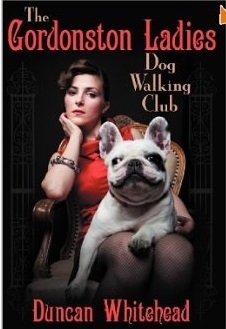 European gentleman in South America, the young Italian count in Paris and a charitable and kind hearted nephew recently arrived from India, to the lovely Kelly (who could even be a model) and her handsome fire-fighter husband, to the Englishman (who seems suspicious) and his young daughter, and finally a mysterious killer with links to organized crime. Who is destined for an early-unmarked grave in the wooded park that centers the tree-lined avenues of Gordonston?
European gentleman in South America, the young Italian count in Paris and a charitable and kind hearted nephew recently arrived from India, to the lovely Kelly (who could even be a model) and her handsome fire-fighter husband, to the Englishman (who seems suspicious) and his young daughter, and finally a mysterious killer with links to organized crime. Who is destined for an early-unmarked grave in the wooded park that centers the tree-lined avenues of Gordonston?This is an absolutely hilarious cosy murder mystery with a kick. A chilling beginning develops into a full-blown saga of intrigue, deceit, and vengeance as petty rivalries escalate and various players set wheels in motion to accomplish their ambitions. With an unerring eye, author Duncan Whitehead homes in on the tiny details that make each character unique. His darkly comic style is reminiscent of Alexander McCall Smith’s writing, with a dry, tongue-in-cheek touch. Seemingly unrelated people and events are drawn into a deadly entanglement that keeps the reader glued to the pages until the dénouement that surprises. I really enjoyed this book and look forward to more from this author. Recommended. Four Stars
by Fiona Ingram
First reviewed for Readers Favorite
Published on April 16, 2013 06:23
April 5, 2013
BOOK REVIEW: TWERP
Julian Twerski isn’t a bully. He’s just made a big mistake. He has done something he is deeply ashamed of, something that goes against the grain of his conscience. When he returns to school after a weeklong suspension, his English teacher offers him a deal: if he keeps a journal and writes about the incident that got him and his friends suspended, he can get out of writing a report on Shakespeare.
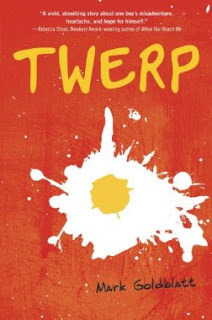 Julian jumps at the chance. And so begins his account of life in sixth grade—blowing up homemade fireworks, writing a love letter for his best friend (with disastrous results), and worrying whether he’s still the fastest kid in school. Lurking in the background, though, is the one story he can’t bring himself to tell, the one story his teacher most wants to hear.
Julian jumps at the chance. And so begins his account of life in sixth grade—blowing up homemade fireworks, writing a love letter for his best friend (with disastrous results), and worrying whether he’s still the fastest kid in school. Lurking in the background, though, is the one story he can’t bring himself to tell, the one story his teacher most wants to hear.There’s nothing like a ‘real’ story to bring a smile to one’s face. The book was inspired by author Mark Goldblatt’s own childhood growing up in Queens during the 1960s. Reading it, one can’t help being taken back to the ‘growing up’ years, when everything is confusing, nothing goes right, everyone else is cooler/faster/cleverer and girls are an unfathomable mystery. Told from Julian’s point of view in typical middle-grader stream of consciousness, the author takes the reader on a trip back in time. Incidents pack Julian’s life and he reacts to them in a visceral and sometimes confused way. Life lessons can be hard, and Julian rolls with the punches, doing his best. He doesn’t always pull it off, but he does make sense of things where he can. Julian is a likeable character and he truly does want to make amends. Kids will enjoy this, but I think their parents will also relish this trip down Memory Lane. Times may change, but kids don’t. Author Mark Goldblatt’s style is quirky and different, but appealing with a touch of nostalgia. Five stars. About the author: Mark Goldblatt is a lot like Julian Twerski, only not as interesting (that’s what he says!). He is a widely published columnist, a novelist, and a professor at the Fashion Institute of Technology. Twerp is his first book for younger readers. He lives in New York City.
Please note that I reviewed an ARC. The book will be available on 28 May 2013.
by Fiona Ingram
Published on April 05, 2013 23:26
BOOK REVIEW: CROOKED HOUSE
I am a huge Agatha Christie (15 /09/1890—12/12/1976)fan. I have possibly all of her books, and nearly all the television and film versions of her works, starring a variety of Hercule Poirots (my best is David Suchet) and Miss Marple (Margaret Rutherford, Joan Hickson and Julia McKenzie tops). According to the Guinness Book of records, Agatha Christie is the best-selling novelist of all time. Often referred to as the “Queen of Crime,” she is also regarded as a master of suspense, plotting, and characterisation.
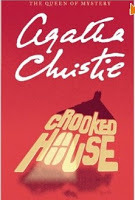 Recently I started rereading her work and began with
Crooked House
, one of the seven novels inspired by nursery rhymes. Agatha Christie described this as her favourite book. She says in the author’s foreword: “This book is one of my own special favourites. I saved it up for years, thinking about it, working it out, saying to myself, ‘One day when I’ve plenty of time, and want to really enjoy myself—I’ll begin it! … Crooked House was pure pleasure.’”
Recently I started rereading her work and began with
Crooked House
, one of the seven novels inspired by nursery rhymes. Agatha Christie described this as her favourite book. She says in the author’s foreword: “This book is one of my own special favourites. I saved it up for years, thinking about it, working it out, saying to myself, ‘One day when I’ve plenty of time, and want to really enjoy myself—I’ll begin it! … Crooked House was pure pleasure.’”Three generations of the Leonides family live together under the roof of wealthy patriarch Aristide. His first wife died; her sister Edith has cared for the household since then. His second wife is the indolent Brenda, decades his junior, who exchanges love letters with the grandchildren's tutor, Laurence Brown. After Aristide is poisoned by his own eye medicine (eserine), his granddaughter Sophia tells narrator and fiancé Charles Hayward that they cannot marry until the killer is apprehended. Charles' father "The Old Man" is the Assistant Commissioner of Scotland Yard, so Charles investigates from the inside along with assigned detective, Chief Inspector Taverner. It seems that everyone could have a motive. The ridiculously young wife Brenda wants to be free to marry the tutor. Then there’s Roger, the eldest son who needs money to prop up his tottering business. Second son Philip has always been jealous of Roger. Not to mention their wives (Clemency and Magda), who could also have motive for various financial reasons. Josephine, Aristides’s precocious granddaughter, tells Charles that the police are stupid and she has already worked out who the killer is, along with copious notes and clues in her little black notebook. When Josephine is attacked and Nanny is mysteriously poisoned by hot chocolate after Brenda and the tutor are arrested, the danger escalates to a surprise finish.
This was the first time I’d read the book and it was great. The pace is good, the characters real (we have all met them somewhere along life’s path) and the suspense chilling. I am quite good at guessing the killer in various crime books, but this one stumped (and shocked) me completely. Charles is excellent as the sometimes-bumbling amateur sleuth. Sophia is sharp-witted and courageous. There’s a Roger and a Magda in every family. The family are at once torn apart and cling together in this time of adversity and stalking danger. Highly enjoyable! (A lesson about making a watertight will included!) Five Stars
by Fiona Ingram
Published on April 05, 2013 08:07
April 4, 2013
BOOK REVIEW: JUDICIUM
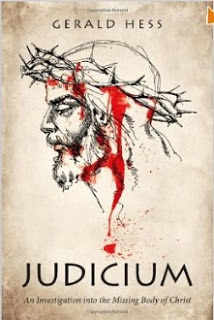 Judicium is a Latin word meaning "legal investigation" or "judicial inquiry" into an incident. One such incident happened around the year 33 AD in the ancient city of Jerusalem when the body of a carpenter's son from Nazareth disappeared three days after He was executed by crucifixion. Because Roman law declared the bodies of those crucified to be Roman property, there was an investigation —a Judicium—into this apparent theft and the strange circumstances surrounding it. Did Jesus’ followers steal the body of their master, or did Caiaphas, High Priest of the Sanhedrin do so to implicate them? If so, why unwrap the body, leaving the shroud and ropes as evidence? Or, as Mary Magdalene fervently attests, did Jesus himself rise from the dead and exit the tomb? The prophecy that Jesus would rise from the dead after three days has come true, but by what means? The novel follows the investigator from Rome as he questions suspects, looks into motives, and runs down leads until the truth is finally revealed to him at the village of Bethany.
Judicium is a Latin word meaning "legal investigation" or "judicial inquiry" into an incident. One such incident happened around the year 33 AD in the ancient city of Jerusalem when the body of a carpenter's son from Nazareth disappeared three days after He was executed by crucifixion. Because Roman law declared the bodies of those crucified to be Roman property, there was an investigation —a Judicium—into this apparent theft and the strange circumstances surrounding it. Did Jesus’ followers steal the body of their master, or did Caiaphas, High Priest of the Sanhedrin do so to implicate them? If so, why unwrap the body, leaving the shroud and ropes as evidence? Or, as Mary Magdalene fervently attests, did Jesus himself rise from the dead and exit the tomb? The prophecy that Jesus would rise from the dead after three days has come true, but by what means? The novel follows the investigator from Rome as he questions suspects, looks into motives, and runs down leads until the truth is finally revealed to him at the village of Bethany.Peace in Judea in 33 AD was a fragile accord, held together by the strength of Rome (the ultimate enemy) and politically motivated clandestine agreements and machinations. Jerusalem simmers with burning resentments, ready for an explosion into civil war. The disappearance of the body of the man who so unsettled established rule could be the fuse that sets off a clash between two mighty forces: Rome and Judea. The significance of Jesus’s body cannot be underestimated for people of the time, and for Christians thereafter. The validity of Jesus’s claims about Himself rests on the Resurrection—did He rise from the dead (proving his divinity) or was his body was stolen?
Gerald Hess has created a fascinating read in this thrilling combination of historical and detective novel. The author weaves a detailed tapestry of the politics and religious hatreds stemming from various antagonistic factions, and his deft and unique handling of the topic breathes new life into an ancient story. Faith, religion, and redemption are highlighted as various players are drawn into the tangle of facts and rumours. Included are interesting details that flesh out the era without impeding the story. Both major and minor characters and their various concerns are well drawn and believable. I particularly enjoyed the investigator’s methods of detection. A minutely researched book, with an excellent plot that unfolds with nail-biting intensity. Highly recommended. Five stars.First reviewed for Readers Favorite
Paperback: 388 pages Publisher: Tate Publishing (January 29, 2013) ISBN-13: 978-1620248041 Genre: historical, Christian, detective
by Fiona Ingram
Published on April 04, 2013 01:42
March 24, 2013
The Magic of Les Misérables
I first saw the stage production of Les Misérableswhen I was a drama student in London. I cried from start to finish. I recently saw the movie version. I cried from start to finish. What is it about this powerful book, written in 1862—meaning it’s 151 years old—that continues to inspire and move people? It is considered one of the greatest novels of the 19thcentury. The story begins in 1815 and culminates in 1832, and follows the life of convict Jean Valjean (based on a real person) in his journey from humiliation to final redemption. It’s not just about one man, however; it’s about a society in transition, politics, justice, philosophy, freedom, religion, and self-belief. It is sweeping in the greatness of the themes embraced by author Victor Hugo.
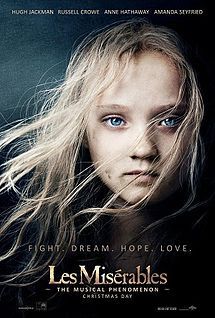 Movie posterThe story line and themes are so strong that it has been adapted for stage, television, and film, and remains as popular as ever. But why? I think, personally, that the passion, pain, anguish, and ultimately victory expressed by the characters resonate even now. In addition, the film techniques and inspired directing has made this recent production drive completely into the hearts of viewers. Of course, not everyone liked the movie. I have read reviews where the writers said they couldn’t wait to sneak out. It’s all about taste. Most critics complained about the singing.
Movie posterThe story line and themes are so strong that it has been adapted for stage, television, and film, and remains as popular as ever. But why? I think, personally, that the passion, pain, anguish, and ultimately victory expressed by the characters resonate even now. In addition, the film techniques and inspired directing has made this recent production drive completely into the hearts of viewers. Of course, not everyone liked the movie. I have read reviews where the writers said they couldn’t wait to sneak out. It’s all about taste. Most critics complained about the singing.Ah, the singing. I have the CD and have played it so many times that even I hit those high notes in my head. Again, it’s not about the singing; it’s about actors portraying a powerful and passionate story. They just happen to be singing! From the moment the opening scene sweeps the viewer into an epic of monumental proportions, one is lost in the story. From the visual splendour of a giant vessel being towed into dry dock, to the close-up of a filthy, weeping, cropped Anne Hathaway, it is hard not to succumb to what the performers do so well: tell a story. And that’s what writers aim to do: tell a story that moves the reader/audience. Life is about stories—people’s personal tales, and society’s grand epics.
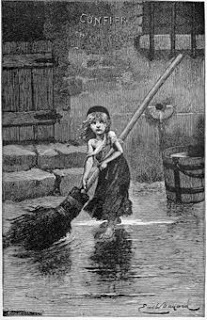 Cosette by Emile Bayard - original 1862 editionHalf the story plays out against the scenario of the June revolution in France, with barricaded streets forming a backdrop of increasing violence and tension that affects the lives of smaller people in this great game of life. Hugh Jackman holds the story together magnificently with a powerful, magnetic performance. He is Jean Valjean with every fibre of his being. Contained, repressed, angry and driven, Russell Crowe (for me) epitomizes the man doing his job, if it kills him, in Javert. His voice was passable, but again (although I could hear the soundtrack soaring in my head), the visuals surrounding him—horses galloping along the beach; streets of Paris seen from the building tops: a fatal plunge to his death—all serve to add to the dimension of Valjean’s alter ego. Anne Hathaway is a beautiful, talented actress, and her interpretation of Fantine puts her into the ‘serious actress’ division. Her performance is exquisite.
Cosette by Emile Bayard - original 1862 editionHalf the story plays out against the scenario of the June revolution in France, with barricaded streets forming a backdrop of increasing violence and tension that affects the lives of smaller people in this great game of life. Hugh Jackman holds the story together magnificently with a powerful, magnetic performance. He is Jean Valjean with every fibre of his being. Contained, repressed, angry and driven, Russell Crowe (for me) epitomizes the man doing his job, if it kills him, in Javert. His voice was passable, but again (although I could hear the soundtrack soaring in my head), the visuals surrounding him—horses galloping along the beach; streets of Paris seen from the building tops: a fatal plunge to his death—all serve to add to the dimension of Valjean’s alter ego. Anne Hathaway is a beautiful, talented actress, and her interpretation of Fantine puts her into the ‘serious actress’ division. Her performance is exquisite. Like it or love it, but see it without any expectations of soaring operatic voices. See it for what it is—an incredible story, performed with passion by talented actors, who pour their hearts and souls into every minute. by Fiona Ingram(Images courtesy of Wikipedia: see links)
Published on March 24, 2013 04:18
March 21, 2013
Book Review: Salt Redux
I know I was one of the first people (lucky me!) to review Lucinda Brant's new novel, Salt Redux, because I received an ARC (Advanced Reader Copy). I love historical romance and always counted Georgette Heyer among my favourite authors, for her wonderful portrayal of the Regency era. In my mind, Lucinda Brant has done the same for the Georgian era, a time in history that perhaps has never had the publicity it deserves. Rich and vibrant, and an age of great initiative, political expansion, and economic growth, the finer details will not escape readers in any of Ms Brant's fabulous books.
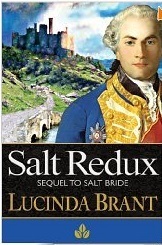 Salt ReduxSalt Redux is the second book in the Salt Hendon series, following on the loves and lives of the Earl of Salt Hendon and his Countess, the beautiful Jane. In the four years since their marriage, much has happened. Love and three children later, they think that happiness eternal is theirs and nothing can destroy their idyllic life. The earl’s cousin, Sir Antony Templestowe, has endured four years of exile in Russia, in the guise of a diplomatic posting. Battling with his addictions, he has come to terms with himself, and his undying love for the earl’s sister, Lady Caroline. Lady Diana St. John, the earl’s nemesis, and a murderess, has been carefully incarcerated in a remote castle in Wales as the only way to prevent her previous sins from being discovered by society, and to prevent her from committing further wickedness. This is possible because Lady Diana is, unfortunately, quite mad. She is obsessed with becoming the true Countess of Salt Hendon, and dislodging the woman she considers the usurper to her title, that is Jane. She has had four years of careful scheming and preparation. Once she escapes imprisonment by pure Machiavellian ingenuity and diabolical plotting, Diana arrives back in their lives with plans of her own, plans that include death and destruction. Will she succeed, and will happiness and love be restored or ruined? Lucinda Brant never fails to please readers of historical romance with her lavish portrayal of her niche arena: the Georgian era. Such are the minute and careful details that the era itself becomes almost like a character in the book. However, the characters themselves tug at the heartstrings with their intense feelings: love, anguish, desire, and drama abound as various sub-plots play out in a background to the main story. The richness of the prose and the attention to all that drives the story make this a wonderful read. Tension mounts as Lady Diana proceeds with her plot to unseat Jane. The story is multi-layered and threads from the past are seamlessly woven into current events. Salt Bride was the first Lucinda Brant book I reviewed and I loved it. What a pleasure to revisit ‘old friends’ in this sequel. Although readers can enjoy the book as a stand-alone, I would recommend their reading Salt Bride first to fully appreciate the poignant aspect of the earl and his bride’s love story from the start. Highly recommended. Five stars. First reviewed for Readers Favorite
Salt ReduxSalt Redux is the second book in the Salt Hendon series, following on the loves and lives of the Earl of Salt Hendon and his Countess, the beautiful Jane. In the four years since their marriage, much has happened. Love and three children later, they think that happiness eternal is theirs and nothing can destroy their idyllic life. The earl’s cousin, Sir Antony Templestowe, has endured four years of exile in Russia, in the guise of a diplomatic posting. Battling with his addictions, he has come to terms with himself, and his undying love for the earl’s sister, Lady Caroline. Lady Diana St. John, the earl’s nemesis, and a murderess, has been carefully incarcerated in a remote castle in Wales as the only way to prevent her previous sins from being discovered by society, and to prevent her from committing further wickedness. This is possible because Lady Diana is, unfortunately, quite mad. She is obsessed with becoming the true Countess of Salt Hendon, and dislodging the woman she considers the usurper to her title, that is Jane. She has had four years of careful scheming and preparation. Once she escapes imprisonment by pure Machiavellian ingenuity and diabolical plotting, Diana arrives back in their lives with plans of her own, plans that include death and destruction. Will she succeed, and will happiness and love be restored or ruined? Lucinda Brant never fails to please readers of historical romance with her lavish portrayal of her niche arena: the Georgian era. Such are the minute and careful details that the era itself becomes almost like a character in the book. However, the characters themselves tug at the heartstrings with their intense feelings: love, anguish, desire, and drama abound as various sub-plots play out in a background to the main story. The richness of the prose and the attention to all that drives the story make this a wonderful read. Tension mounts as Lady Diana proceeds with her plot to unseat Jane. The story is multi-layered and threads from the past are seamlessly woven into current events. Salt Bride was the first Lucinda Brant book I reviewed and I loved it. What a pleasure to revisit ‘old friends’ in this sequel. Although readers can enjoy the book as a stand-alone, I would recommend their reading Salt Bride first to fully appreciate the poignant aspect of the earl and his bride’s love story from the start. Highly recommended. Five stars. First reviewed for Readers FavoriteIn case you missed my review of Salt Bride, the first in the Salt Hendon series, here it is:
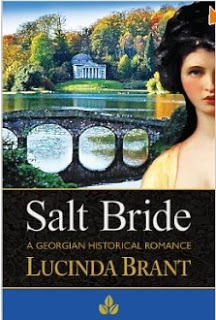 Salt BrideThe Earl of Salt Hendon, with good looks, fortune, and the reputation of a lover par excellence, could have any woman he pleased just by crooking his little finger. So when he seemingly lost his reason and married a squire's daughter, Jane Despard, Society is aghast. Despite being a noted beauty, Jane's reputation is clouded, an incident in her past having cast a shadow over her marital prospects. What Society does not know is that Jane and the Earl share a dreadful secret: a past encounter that brought them both nothing but misery, misunderstanding, and mistrust. Their marriage four years after that encounter is sealed so that the Earl can discharge a promise to a dying man and Jane can save her stepbrother from financial ruin. Jane holds out the hope that the Earl will finally come to love her. Her husband, alas, is deeply influenced by the scheming Diana, Lady St. John, widow of his cousin and the mother of his nominated heir, his young godson. Can Jane's love prevail and will the Earl finally open his eyes to the Machiavellian manoeuvres of the wicked Lady St. John?
Salt BrideThe Earl of Salt Hendon, with good looks, fortune, and the reputation of a lover par excellence, could have any woman he pleased just by crooking his little finger. So when he seemingly lost his reason and married a squire's daughter, Jane Despard, Society is aghast. Despite being a noted beauty, Jane's reputation is clouded, an incident in her past having cast a shadow over her marital prospects. What Society does not know is that Jane and the Earl share a dreadful secret: a past encounter that brought them both nothing but misery, misunderstanding, and mistrust. Their marriage four years after that encounter is sealed so that the Earl can discharge a promise to a dying man and Jane can save her stepbrother from financial ruin. Jane holds out the hope that the Earl will finally come to love her. Her husband, alas, is deeply influenced by the scheming Diana, Lady St. John, widow of his cousin and the mother of his nominated heir, his young godson. Can Jane's love prevail and will the Earl finally open his eyes to the Machiavellian manoeuvres of the wicked Lady St. John?It is the year 1763 and King George III is on the throne. Georgian aristocratic life is synonymous with elegance and a devil-may-care pleasure, and the upper classes enjoy a kind of amorality in their love lives. Men, and women, are inclined to take their pleasure where they choose. It is this angle, the tawdry underbelly of high society that the author captures so brilliantly in this eminently readable novel. The rakish, raucous character of the Georgian period is contrasted superbly with the sophistication of the age. The author has created a love story that fans of historical romance will relish. Details of the politics, manners, social mores, and dress are deftly interspersed within the plot lines to fully flesh out the era and the people in it. The author's characterization, even with secondary characters, is accurate and believable. The plot is complex and interesting; the author guides the reader through the maze of misunderstandings without ever giving the game away. The dialogue is witty and sparkling, with the characters' words often belying their actions and vice versa, thus further adding to the love confusion. I thoroughly enjoyed this book and highly recommend it. Five stars. First reviewed for Readers Favorite
by Fiona Ingram
Published on March 21, 2013 05:17
March 5, 2013
Book Review: Xor: The Shape of Darkness
It’s difficult finding books for boys because they are (historically) slower or more reluctant readers than girls. Action and adventure will appeal, especially if the plot captures their imagination. In Xor: The Shape of Darkness, author Moshe Sipper uses his own experiences and skills as a professor of Computer Science, working in the general area of Artificial Intelligence to create a fascinating off-world adventure.Review: On the day Lewis Nash turned twelve, he expected to feel a bit different, maybe a bit older and wiser. He didn’t expect to turn into the shape of anything that popped into his head, like a stick insect or a dinosaur. It’s all he can do to keep his thoughts focused on being a boy. On his way home, things suddenly become clearer, starting with a mysterious explosion that blows up his home and kills his dad. Having lost his mother in an accident four years earlier, Lewis realizes he is now an orphan — but he has no time to dwell on it because a terrifying wolf man tries to grab him as he gets off the bus. A weird hooded man (Master Long), with long rabbit ears, saves Lewis. The man transports him to another planet called Xor, Lewis’s real home. To his utter disbelief, Lewis discovers that his true parents are Lord and Lady Shaper; that his parents on earth were his adoptive parents and that Xor is his birthplace. In fact, Lewis is actually a Shaper, and the only person who has the capabilities to save Xor from being destroyed by the Realm Pirates. Can Lewis tap into his powerful Shaper skills in time and fulfill his destiny?
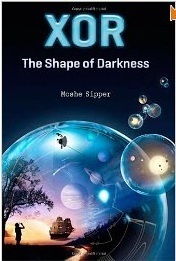
What an adventure! Boys in particular will just love this blend of fantasy and sci-fi, mixed up with snippets of real science and technology. Author Moshe Sipper has successfully created a fascinating parallel world in Xor that echoes much of Earth, but sometimes improves on things. It’s a race against time as Lewis, with a bunch of helpers (including a magician) search for the sorceress Dalith the Beneficent who can help Lewis save Xor. However, it’s not just about magic and molecules. Lewis must rise to the occasion and find his role in life. Part of the monumental task facing him is finding his inner self, and discovering the meaning of love and compassion. He also wrestles with concepts such as physical freedom, slavery, and freedom of choice as he meets various unusual characters on Xor. I think the author has very cleverly threaded some important coming-of-age themes into this tale of adventure and bravery. A wonderful ending hints at more adventures. Recommended. 4 Stars Age Group: Middle grade
by Fiona Ingram
First reviewed for Readers' Favorite
Published on March 05, 2013 01:09
February 26, 2013
YA Book Review: The Gift
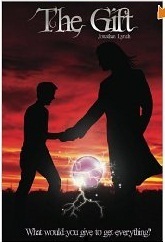 Seventeen-year-old Michael decides to end it all one day. He feels he has nothing to live for. His life at school is a misery because of a gang of bullies; he has never kissed a girl; and his diary, in which he documents all his troubles, seems to be his only consolation. However, when he tries to commit suicide with pills washed down with alcohol, he wakes to find himself alive with no trace of pills, alcohol, or his suicide note. There is, however, a note telling him he will receive a visit from a stranger, offering him a chance at a new life. He can have all he desires, based on a handshake and a promise. This chance—aka the Gift—comes with a price. In 66 years’ time, Michael must do the strange visitor a small favour. If he accepts, then he cannot break this bargain. Michael reasons that 66 years is a long time. What can possibly go wrong? His life is transformed when he changes physically and mentally to a state of almost-perfection; his mother wins a vast fortune; and he begins a relationship with the girl he always worshipped from afar. But the man in black returns sooner than expected and demands his price.
Seventeen-year-old Michael decides to end it all one day. He feels he has nothing to live for. His life at school is a misery because of a gang of bullies; he has never kissed a girl; and his diary, in which he documents all his troubles, seems to be his only consolation. However, when he tries to commit suicide with pills washed down with alcohol, he wakes to find himself alive with no trace of pills, alcohol, or his suicide note. There is, however, a note telling him he will receive a visit from a stranger, offering him a chance at a new life. He can have all he desires, based on a handshake and a promise. This chance—aka the Gift—comes with a price. In 66 years’ time, Michael must do the strange visitor a small favour. If he accepts, then he cannot break this bargain. Michael reasons that 66 years is a long time. What can possibly go wrong? His life is transformed when he changes physically and mentally to a state of almost-perfection; his mother wins a vast fortune; and he begins a relationship with the girl he always worshipped from afar. But the man in black returns sooner than expected and demands his price.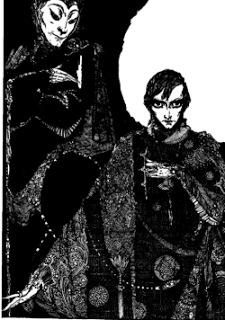 From Goethe's FaustWhat an interesting read! This book is a YA paranormal thriller with wide appeal. Author Jonathan Lynch has a gift for description, and knows how to turn up the tension. My only criticism here would be that in some very exciting scenes, the descriptions tend to slow down the pace. The characters are well-drawn and believable, especially Michael. The reader can really identify with him. The plot moves in and out of various people’s lives, drawing dark threads together as the mysterious stranger works on his own (otherworldly) agenda. Can Michael escape the fate he has chosen for himself? When dark forces conspire to claim the blood price, can Michael break this deadly pact? Reminiscent of the legend of Faust, who surrendered moral integrity for power and success, the story also throws up interesting questions of good versus evil; what is truth, and what things are beyond price. The book ends in a fascinating way, and I’m sure readers would love a continuation. Recommended.
From Goethe's FaustWhat an interesting read! This book is a YA paranormal thriller with wide appeal. Author Jonathan Lynch has a gift for description, and knows how to turn up the tension. My only criticism here would be that in some very exciting scenes, the descriptions tend to slow down the pace. The characters are well-drawn and believable, especially Michael. The reader can really identify with him. The plot moves in and out of various people’s lives, drawing dark threads together as the mysterious stranger works on his own (otherworldly) agenda. Can Michael escape the fate he has chosen for himself? When dark forces conspire to claim the blood price, can Michael break this deadly pact? Reminiscent of the legend of Faust, who surrendered moral integrity for power and success, the story also throws up interesting questions of good versus evil; what is truth, and what things are beyond price. The book ends in a fascinating way, and I’m sure readers would love a continuation. Recommended.4 Starsby Fiona IngramFirst reviewed for Readers Favorite(b/w illustration from Wikipedia - see link)
Published on February 26, 2013 22:20



